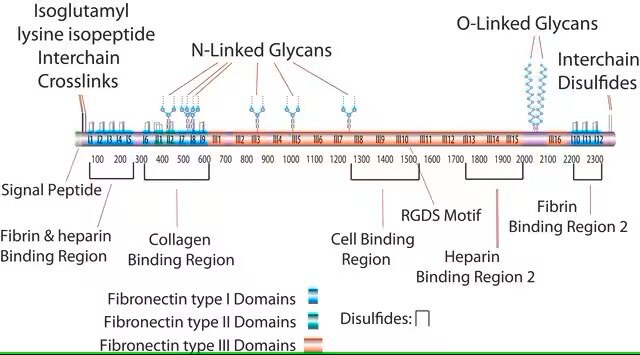S5171
Human Fibronectin
formulated with recombinant human fibronectin fragment III-C expressed in E. coli and fibronectin from human plasma, liquid, 2 mg/mL, suitable for cell culture
Synonym(s):
sFN
About This Item
Recommended Products
product name
Superfibronectin from human plasma, solution, BioReagent, suitable for cell culture
biological source
human
Quality Level
recombinant
expressed in E. coli
product line
BioReagent
form
solution
mol wt
~235-270 kDa
packaging
pkg of 5 mg
technique(s)
cell culture | mammalian: suitable
surface coverage
1 μg/cm2
UniProt accession no.
shipped in
ambient
storage temp.
2-8°C
Gene Information
human ... FN1(2335)
Application
Components
Caution
Preparation Note
Storage Class Code
10 - Combustible liquids
WGK
WGK 2
Flash Point(F)
Not applicable
Flash Point(C)
Not applicable
Certificates of Analysis (COA)
Search for Certificates of Analysis (COA) by entering the products Lot/Batch Number. Lot and Batch Numbers can be found on a product’s label following the words ‘Lot’ or ‘Batch’.
Already Own This Product?
Find documentation for the products that you have recently purchased in the Document Library.
Customers Also Viewed
Articles
Enhancing Lentiviral Transduction Efficiency
Fibronectin (FN) is a multifunctional, extracellular plasma glycoprotein produced by hepatocytes that circulates at near micromolar concentration and assembles into extracellular matrix fibrils at cell surfaces along with locally produced cellular FN.
Cancer stem cell media, spheroid plates and cancer stem cell markers to culture and characterize CSC populations.
Extracellular matrix proteins such as laminin, collagen, and fibronectin can be used as cell attachment substrates in cell culture.
Protocols
Dilute fibronectin to the desired concentration. Optimum conditions for attachment are dependent on cell type and application. The typical coating concentration is 1 – 5 ug/cm2.Fibronectin coating protocol, products, and FAQs.
Our team of scientists has experience in all areas of research including Life Science, Material Science, Chemical Synthesis, Chromatography, Analytical and many others.
Contact Technical Service









